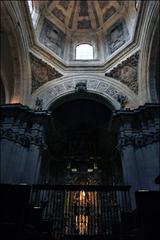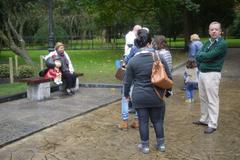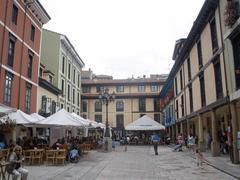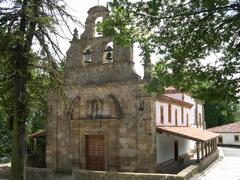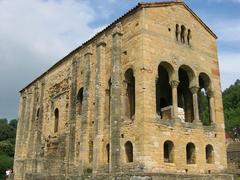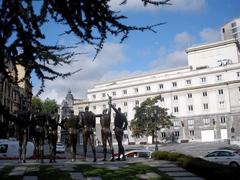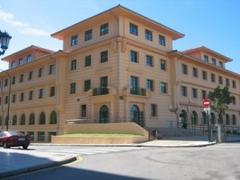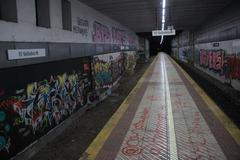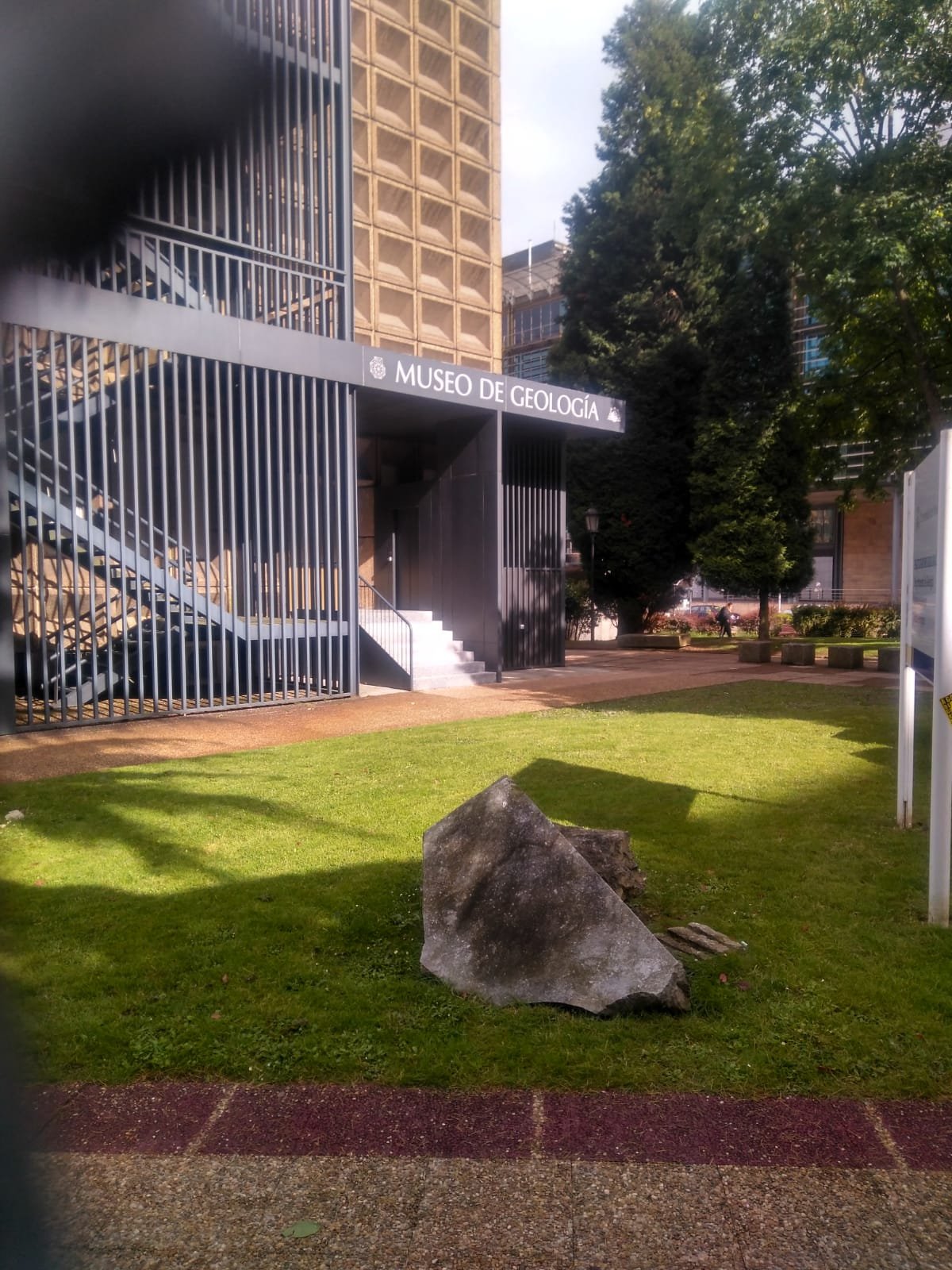
Museum of Geology of the University of Oviedo: Visiting Hours, Tickets, and Visitor Information
Date: 14/06/2025
Introduction
Nestled in the heart of Oviedo, Spain, the Museum of Geology of the University of Oviedo is a distinguished institution dedicated to the preservation, research, and public dissemination of the geological heritage of Asturias and northern Spain. Rooted in the academic tradition of the University of Oviedo—one of Spain’s oldest universities, founded in 1608—the museum provides an immersive educational experience, offering visitors a unique opportunity to explore the Earth’s history through a rich collection of minerals, rocks, and fossils. With an emphasis on both academic rigor and public engagement, the museum stands as a vital link between scientific research and cultural heritage, making it an essential destination for students, researchers, families, and tourists alike.
For the latest updates on visiting hours, tickets, and special events, visitors should consult the museum’s official website (Museum of Geology, University of Oviedo) and trusted tourism resources (Spain Tourism).
Table of Contents
- Introduction
- Historical Background and Development
- Collections and Exhibits
- Visitor Information
- Educational and Community Engagement
- Frequently Asked Questions (FAQ)
- Visuals and Interactive Media
- Tips for Visiting
- Conclusion
- References
Historical Background and Development
Origins and Academic Foundations
The Museum of Geology’s roots trace back to the 19th century, when the University of Oviedo began assembling geological collections for teaching and research. These early collections, enriched by academic expeditions, institutional exchanges, and regional mining activities, laid the groundwork for what would become one of Spain’s most significant geological repositories (University of Oviedo - Times Higher Education).
Growth and Public Mission
Asturias’ geological diversity, renowned for its mineral wealth and fossil deposits, has shaped the museum’s collections and academic focus. Over the decades, the museum expanded its holdings to over 32,000 pieces, including rare minerals, rocks, and fossils, notably from the Carboniferous and Jurassic periods (whichmuseum.com). The museum’s mission extends beyond academia, actively engaging the broader public through exhibitions, educational workshops, and outreach programs.
Modernization and Community Integration
Recent years have seen significant modernization efforts, including digitization of collections, enhanced accessibility, and sustainable design initiatives. The museum has introduced interactive exhibits, digital catalogues, and virtual tours to broaden its reach and improve visitor experience (University of Oviedo - Sustainability). Its integration with the University of Oviedo strengthens its role in regional identity, supporting both research and community engagement.
Collections and Exhibits
Permanent Collections
The museum’s collections are organized into thematic units covering mineralogy, petrology, and paleontology. Highlights include:
- Minerals: Showcasing specimens from Asturias’ mining districts and beyond, such as siderite, fluorite, quartz, calcite, and pyrite. Many minerals are notable for their crystal form and color, with some unique to the Iberian Peninsula (whichmuseum.com).
- Rocks: Displays feature igneous, sedimentary, and metamorphic rocks, illustrating the geological processes that shaped northern Spain.
- Fossils: Fossil collections include trilobites, ammonites, brachiopods, plant remains, and vertebrate bones, particularly from local Carboniferous and Devonian deposits.
Thematic and Temporary Exhibitions
The museum regularly hosts thematic exhibitions that focus on specific geological topics or significant discoveries. These often feature interactive elements, hands-on activities, and specimens on loan from other institutions, catering to both children and adults.
Outdoor Geological Garden
A distinctive feature is the outdoor geological garden, which displays large rock specimens in a natural setting. This area is used for educational activities and provides a unique perspective on regional geology.
Visitor Information
Visiting Hours and Admission
Typical opening hours:
- Winter (September 23 – June 14):
- Monday to Friday: 09:30 – 13:30 and 16:00 – 18:30
- Summer (June 15 – September 22):
- Monday to Friday: 10:30 – 13:30 and 16:00 – 18:30
- August: Closed for the entire month.
- Weekends and Public Holidays: Generally closed. Check ahead for exceptions (WhichMuseum).
Admission:
- Free for all visitors.
- Group tours or special educational sessions may require advance booking.
Location and Directions
- Address: Calle Jesús Arias de Velasco, s/n, 33005 Oviedo, Asturias, Spain
- Access: Centrally located on the University of Oviedo campus, within walking distance of major Oviedo historical sites.
- Transport: Easily reached by bus, taxi, or on foot. Limited parking is nearby; public transport or walking is recommended due to traffic restrictions (Spain.info).
Accessibility
- The museum offers street-level access and some adapted facilities, but as it is housed in a historic building, certain exhibition areas may only be reachable by stairs.
- Visitors with specific mobility needs are advised to contact the museum in advance.
Guided Tours and Special Events
- Guided tours are available by prior arrangement, including English-speaking guides when requested.
- The museum hosts special exhibitions, science festivals, and educational workshops throughout the year.
- Advance booking is advised for group visits or special events.
Photography and Media
- Personal, non-flash photography is generally allowed; tripods and commercial photography require permission.
- Virtual tours and image galleries are available on the museum’s website.
Facilities
- Restrooms are available on-site.
- No café or restaurant inside, but numerous dining options are within a five-minute walk.
Nearby Attractions
- Archaeological Museum of Asturias
- Museum of Fine Arts of Asturias
- Oviedo Cathedral
- Campo de San Francisco Park
These attractions are all within easy reach and enhance the cultural experience of visiting the museum.
Educational and Community Engagement
The museum’s mission includes promoting geological literacy and environmental awareness. It offers:
- School and family programs: Hands-on workshops and interactive activities.
- Academic support: Collections serve as a resource for university courses and research projects.
- Community outreach: Collaborations with schools and local organizations foster scientific curiosity and regional pride (spain.info).
Frequently Asked Questions (FAQ)
Q: What are the Museum of Geology of the University of Oviedo visiting hours?
A: Varies by season; typically open Monday to Friday, closed on weekends, public holidays, and in August. See above or check the website for current details.
Q: Is there an admission fee?
A: Admission is free for all visitors.
Q: Are guided tours available in English?
A: Yes, guided tours (including in English) can be arranged in advance.
Q: Is the museum accessible for visitors with reduced mobility?
A: Some areas may not be fully accessible due to the historic nature of the building. Contact the museum for assistance.
Q: Can I take photographs inside?
A: Yes, personal photography (without flash or tripods) is usually permitted.
Visuals and Interactive Media
The museum features high-quality images, detailed exhibit labels, and interactive displays. Online, visitors can find photo galleries and occasional virtual tours to preview the museum’s offerings.
Tips for Visiting
- Plan ahead: Confirm current visiting hours and book guided tours in advance.
- Combine attractions: Explore nearby museums and Oviedo’s old town.
- Arrive early: Weekday mornings are generally quieter.
- Language: Bring a translation app if you do not speak Spanish; some English materials are available.
- Accessibility: Contact the museum if you have mobility needs.
- Weather: Oviedo’s climate can be rainy; bring an umbrella and wear comfortable shoes.
- Dining: Enjoy Asturian specialties in local cafés after your visit (Independent).
Conclusion
The Museum of Geology of the University of Oviedo is a premier scientific and cultural destination, offering a window into the geological evolution of Asturias and northern Spain. Its extensive collections, free admission, educational programs, and central location make it ideal for all visitors. Plan your trip by checking the latest information, and don’t miss the chance to explore Oviedo’s rich history and vibrant culture alongside your museum visit.
For updates and exclusive content, download the Audiala app and follow the museum’s social media channels.
References
- Museum of Geology, University of Oviedo
- Spain Tourism
- WhichMuseum – Museum of Geology of the University of Oviedo
- WhichMuseum – Geological Museums in Asturias
- Times Higher Education – University of Oviedo
- Independent – Oviedo City Guide
- Spain.info – Oviedo Destination Guide
- Museum Opening Hours



